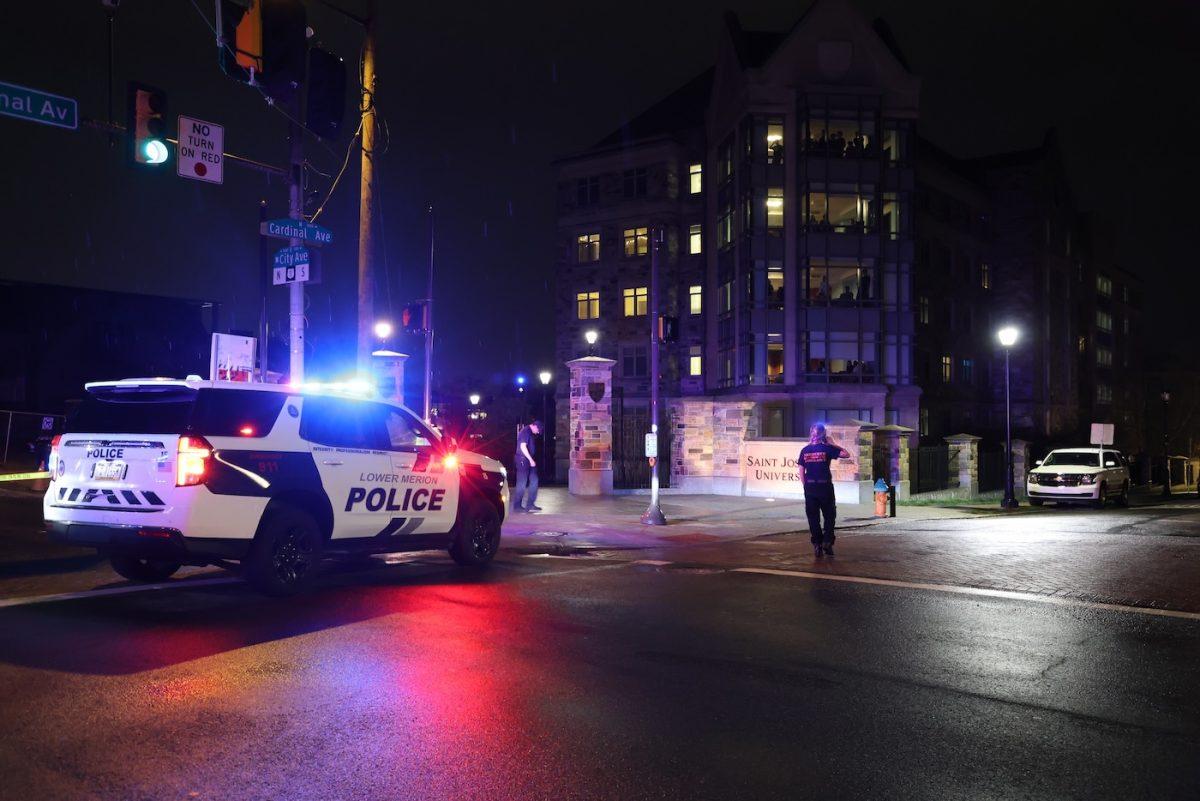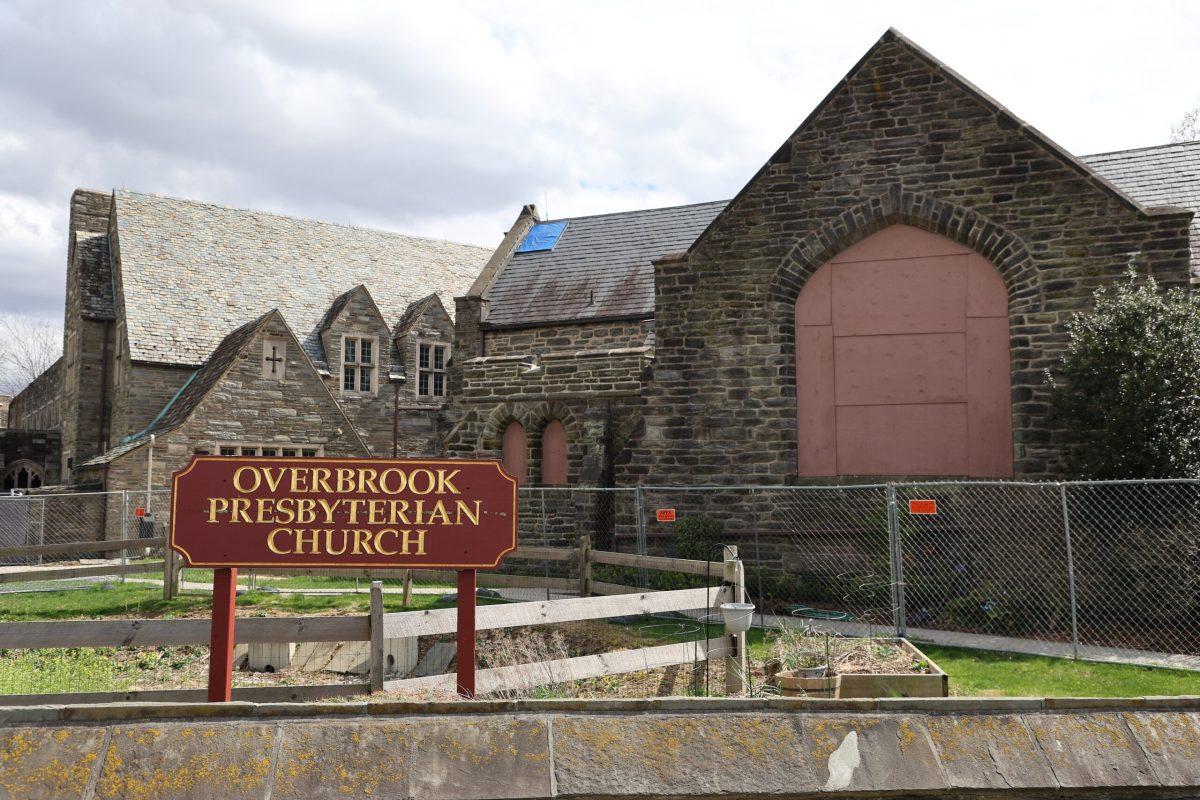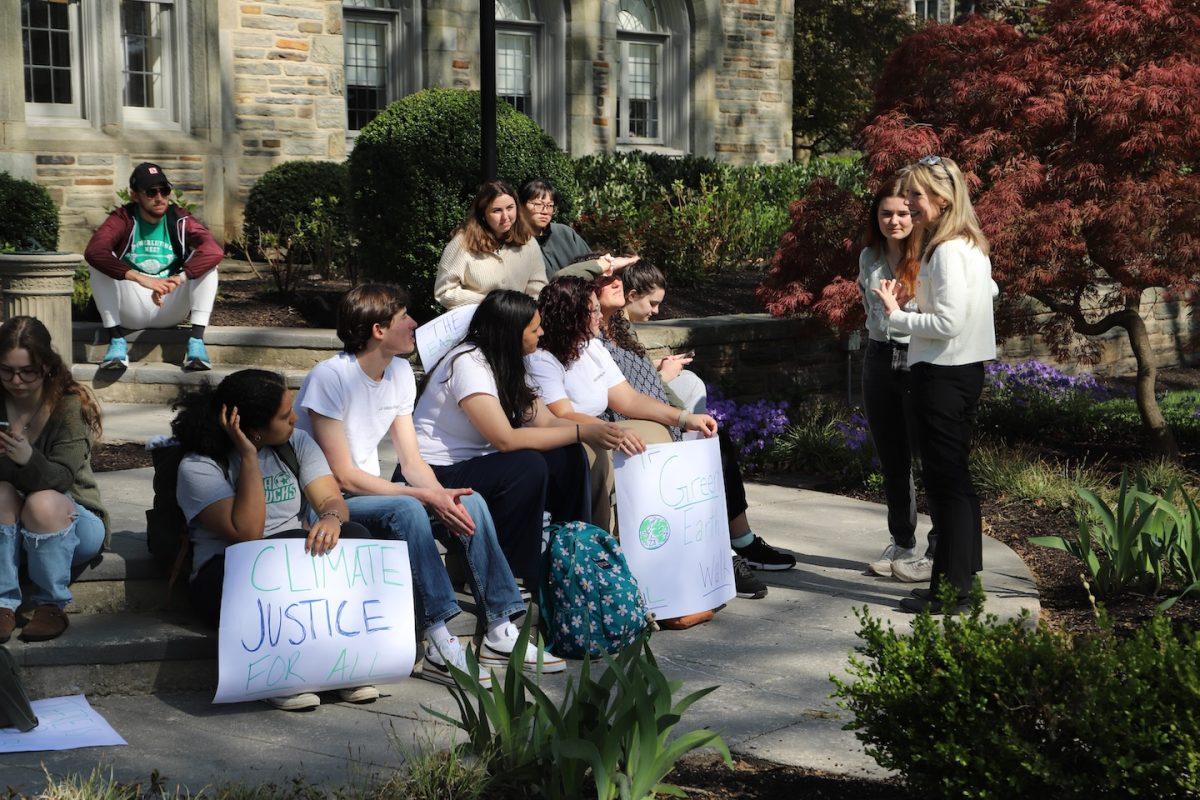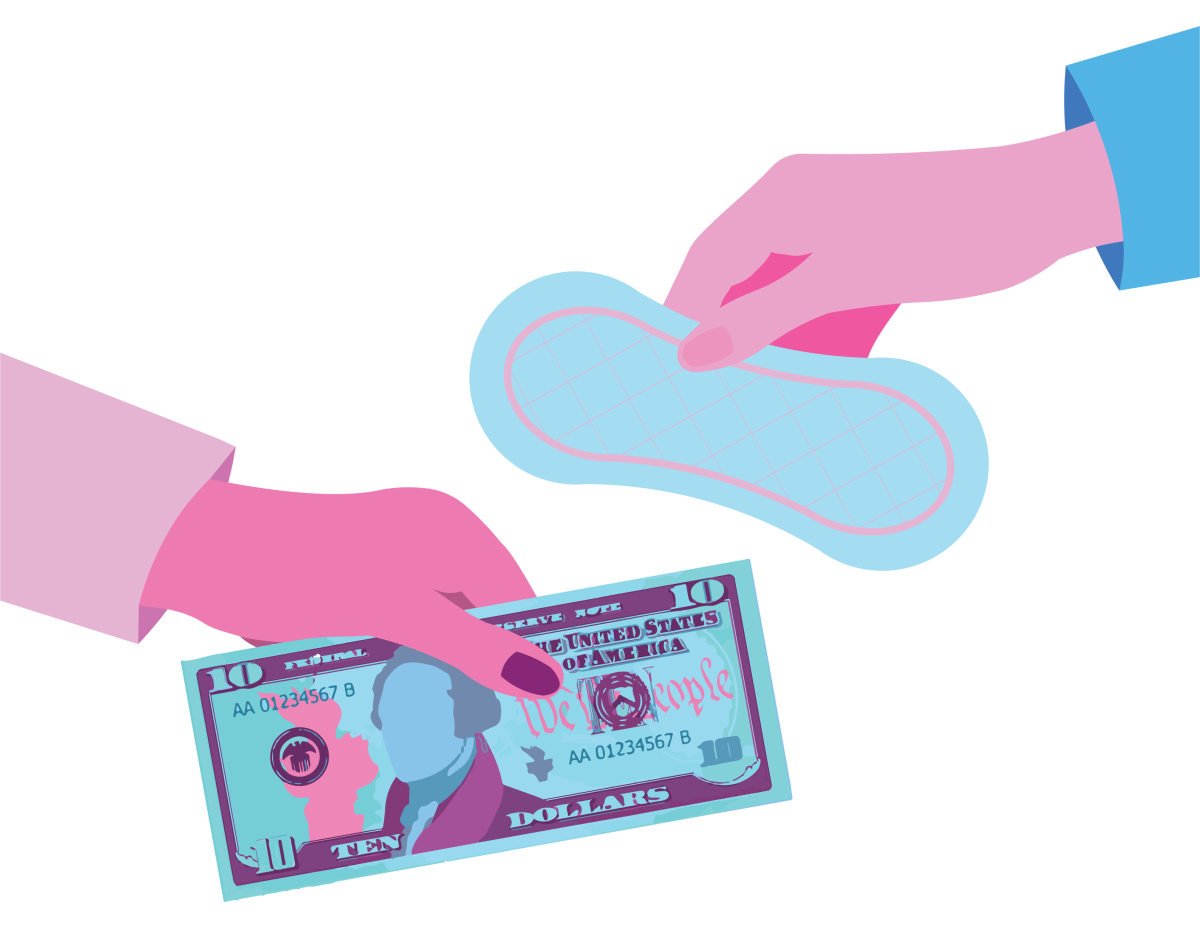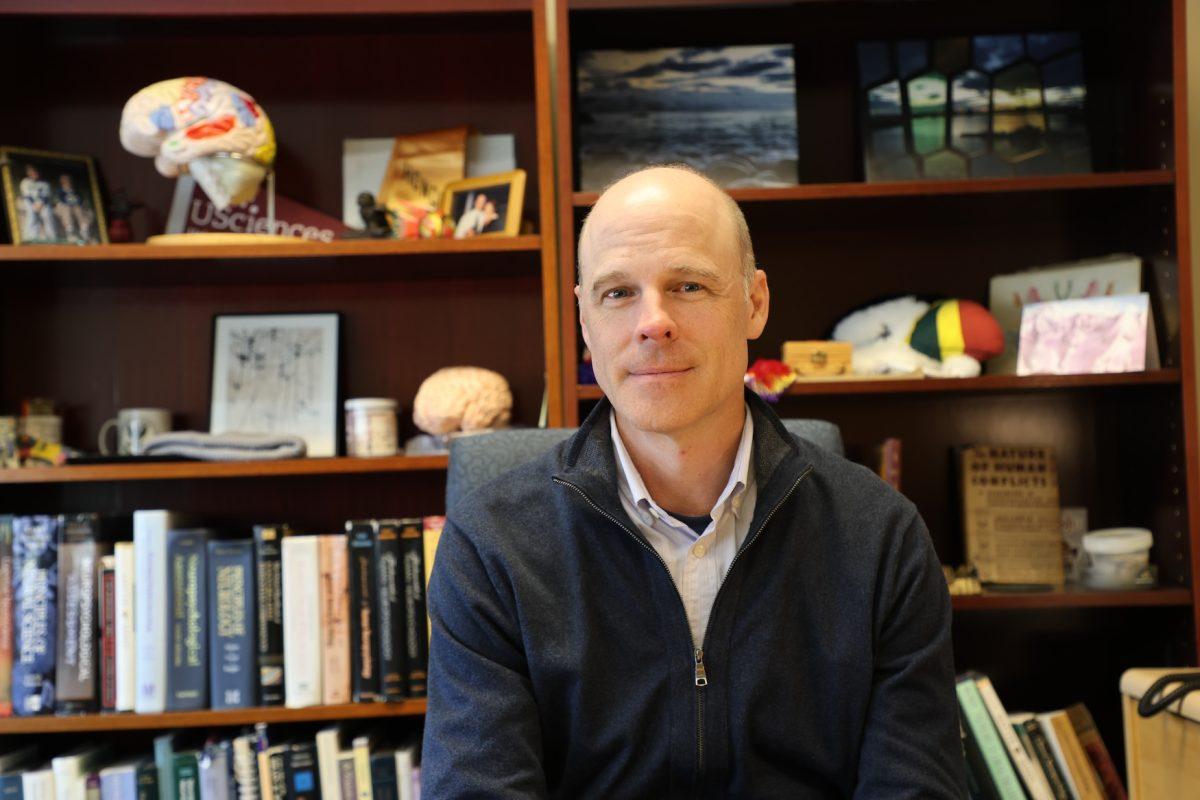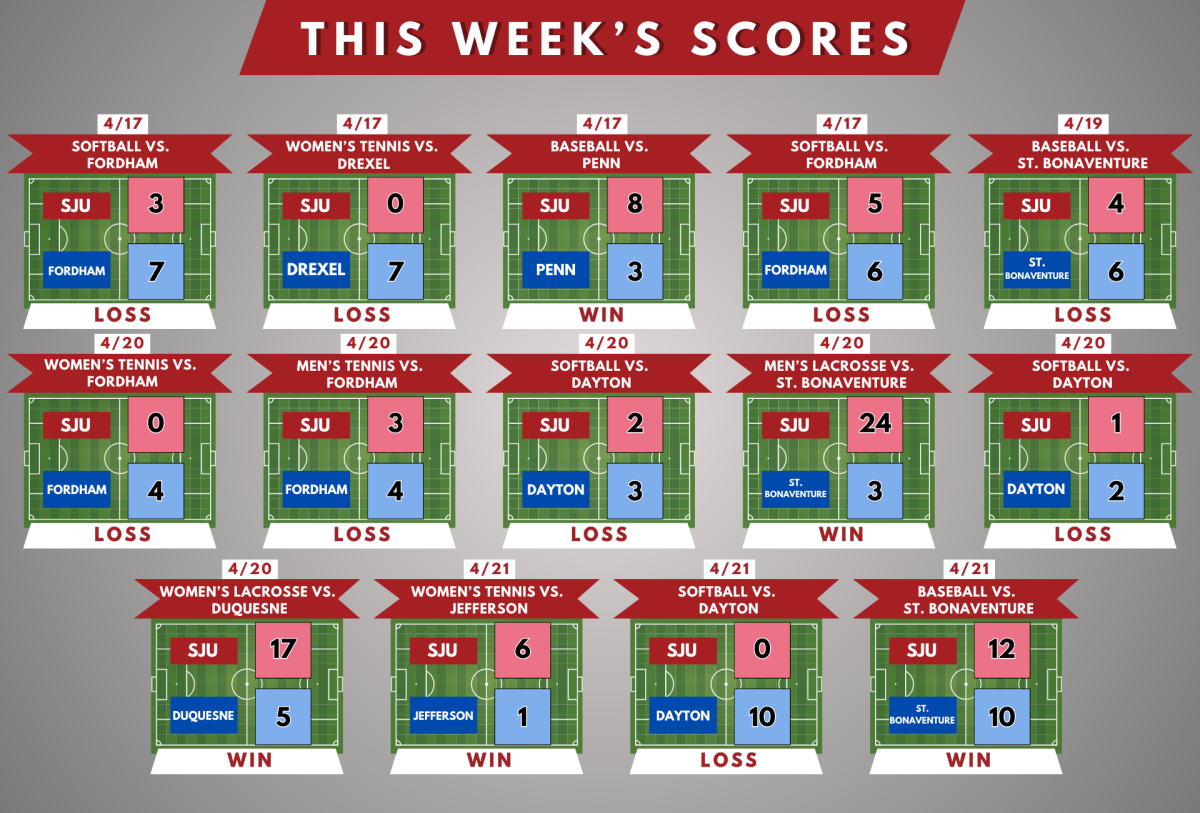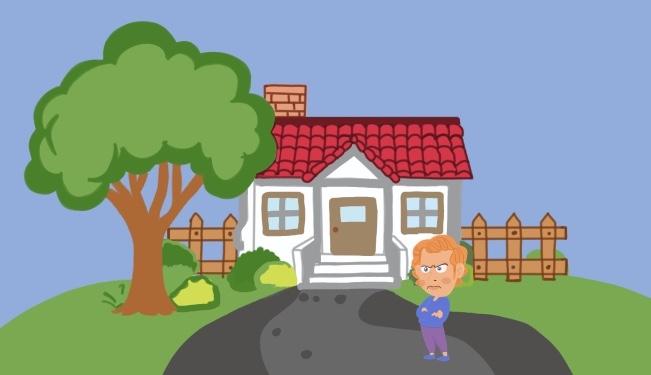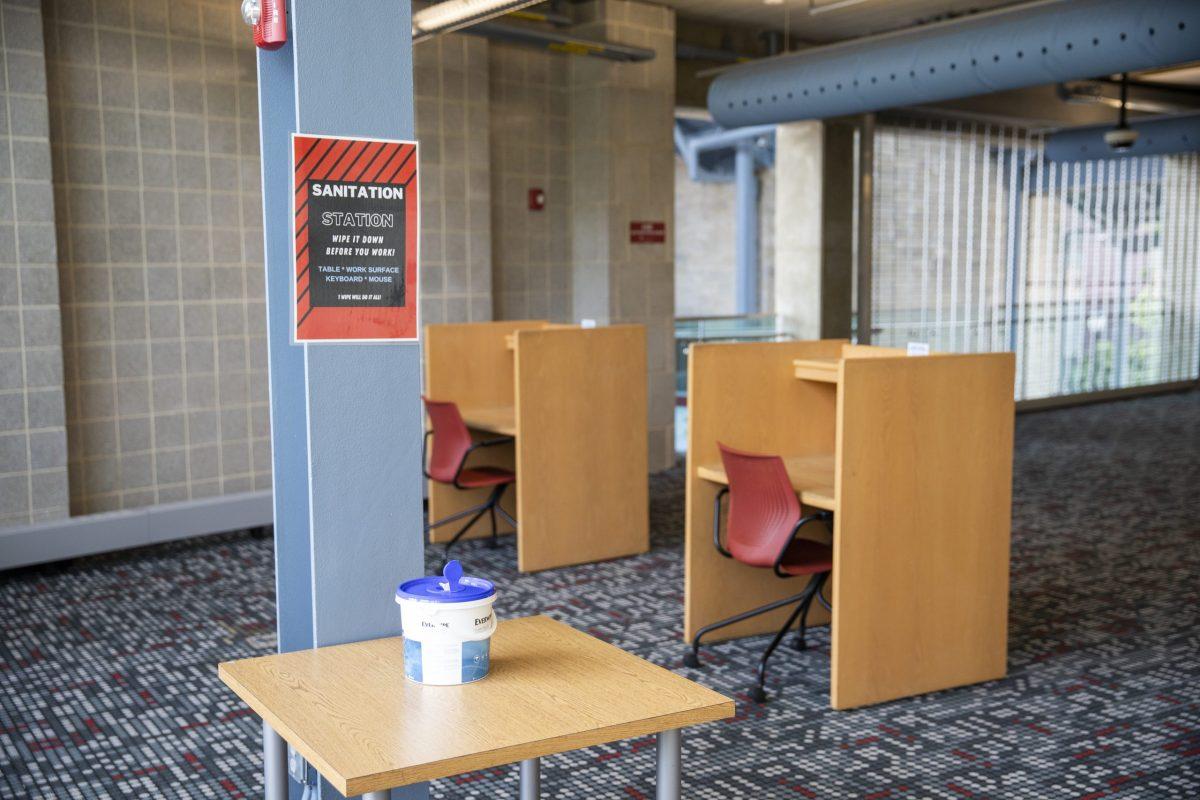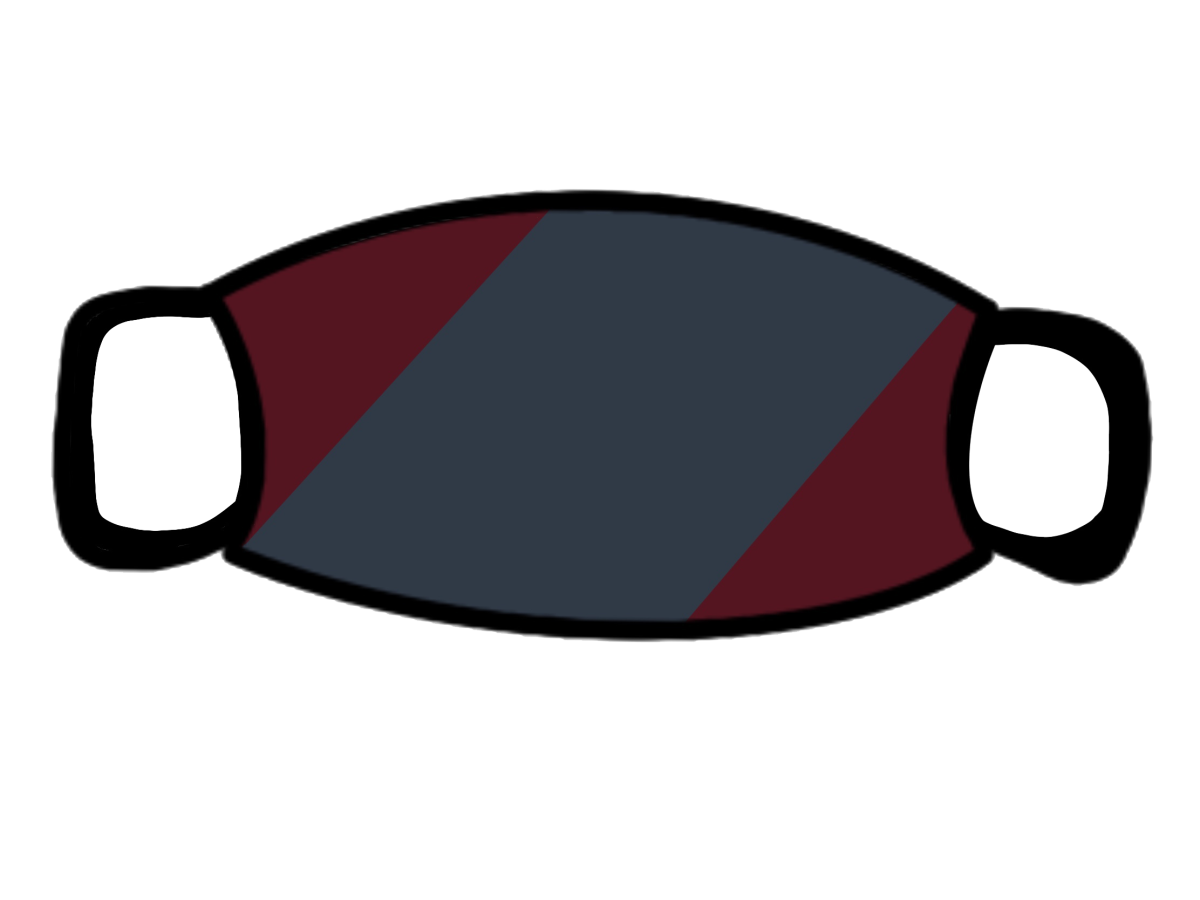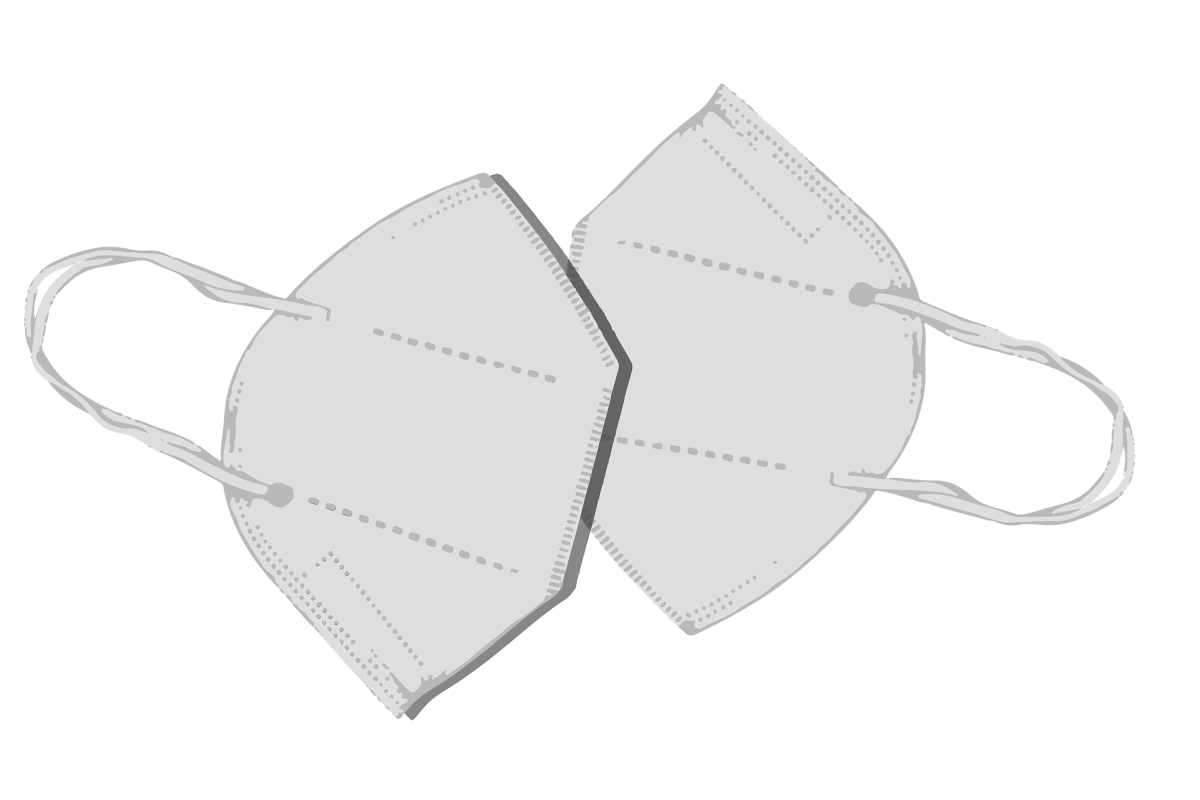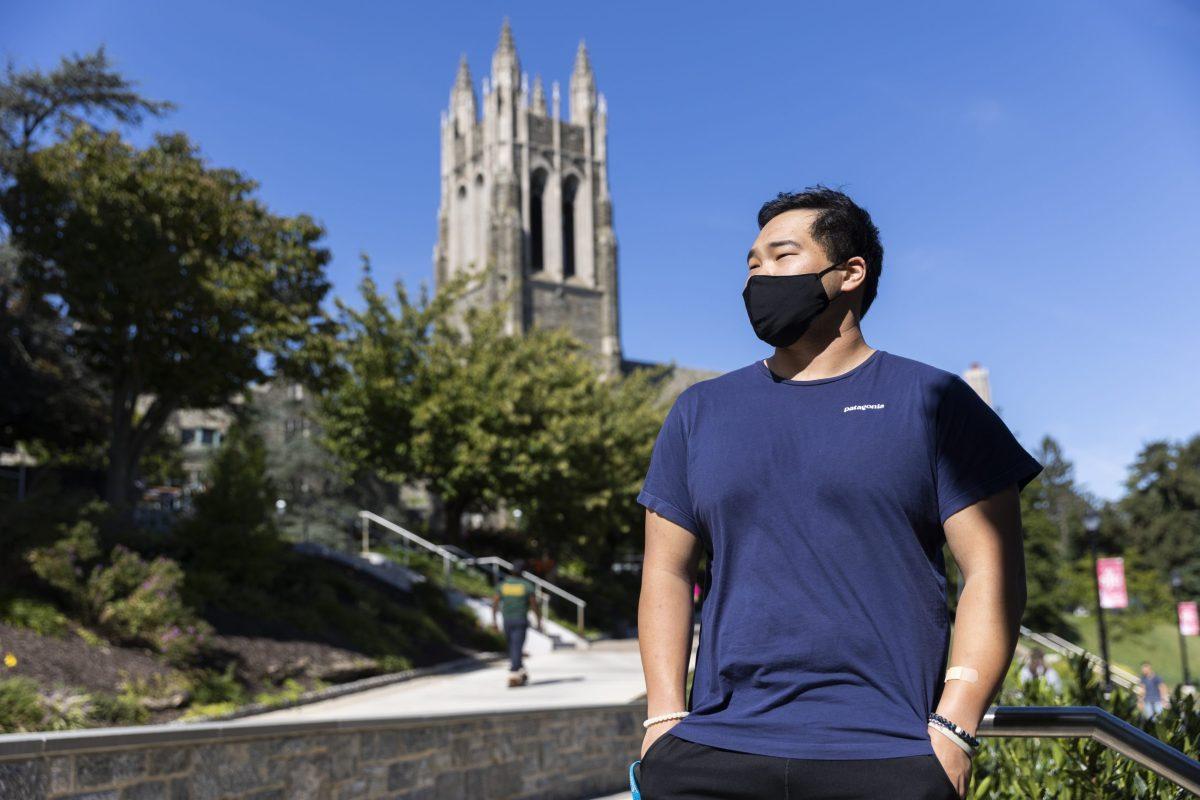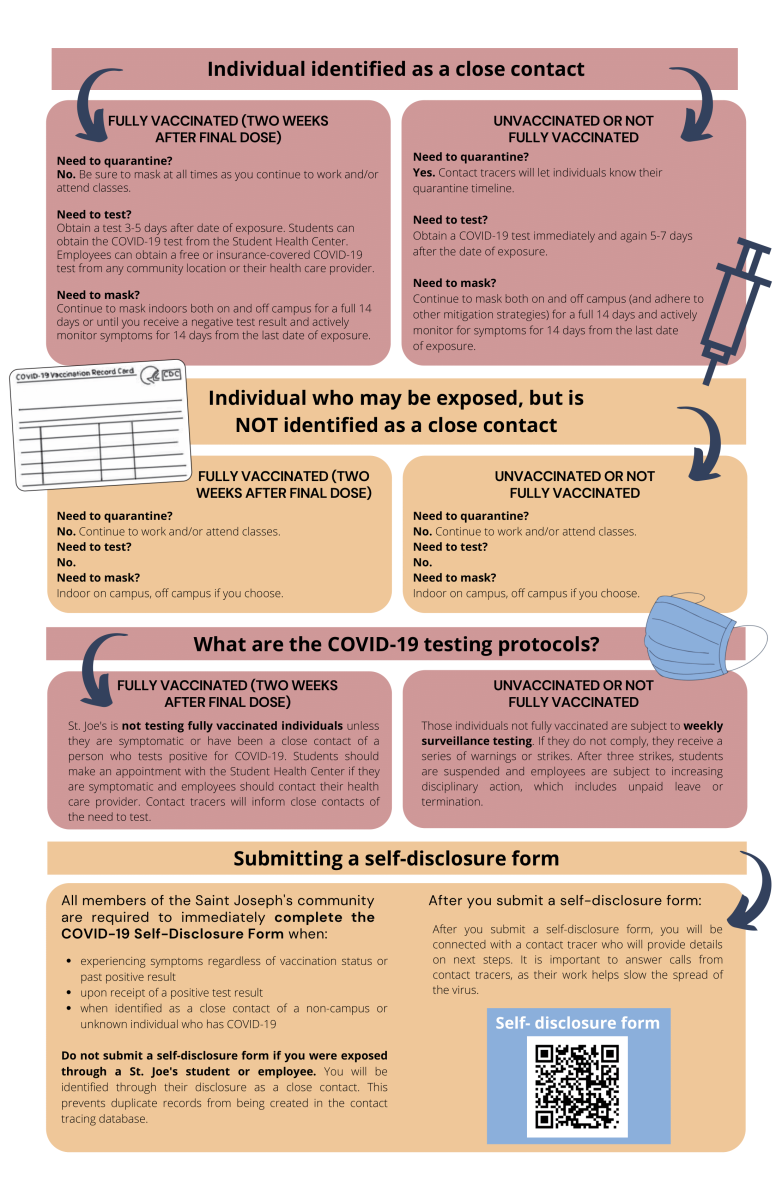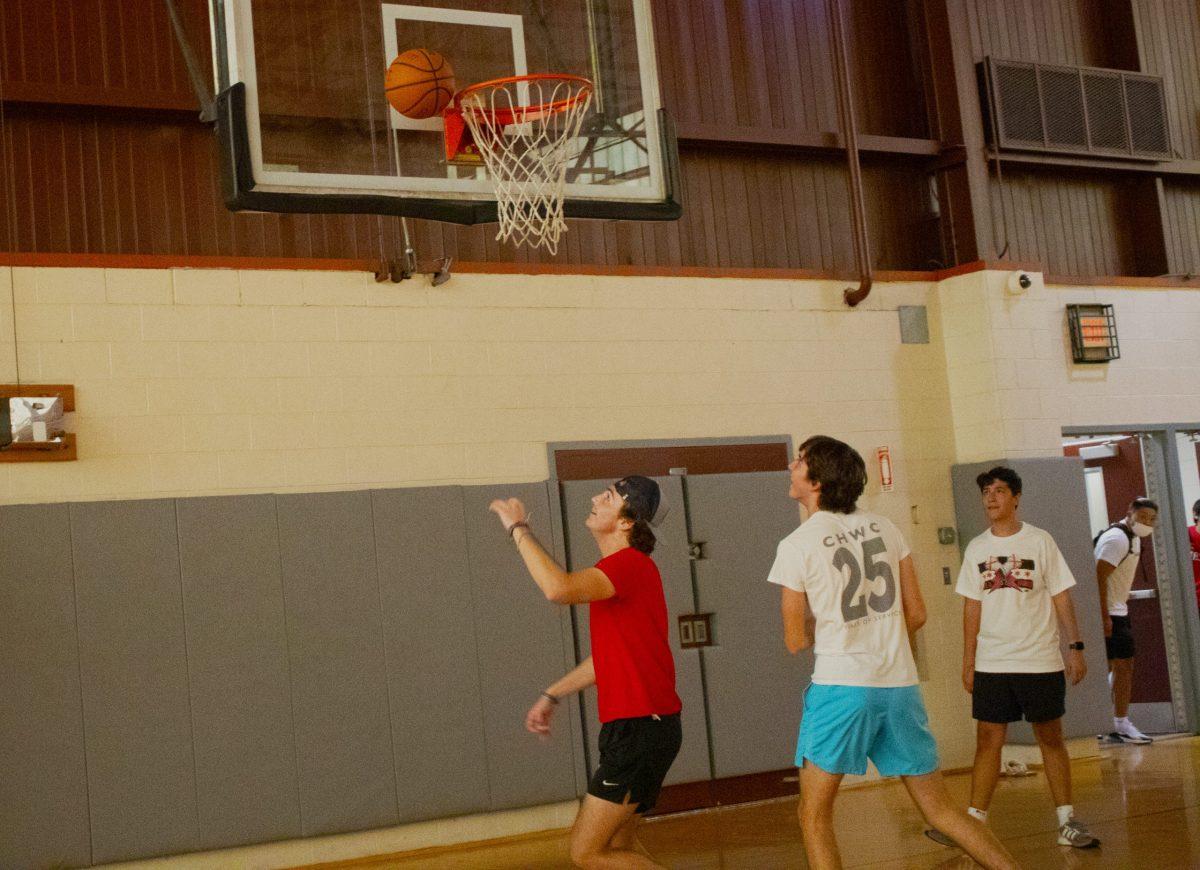One week into the start of fall semester classes, the university received numerous requests related to cleaning protocols that had been promised in the Hawk Hill Ready Plan.
The plan specifies cleaning and disinfection protocols for high traffic areas on campus and promises at least twice daily cleaning of classrooms and dining areas.
Included in the plan were undertakings that “High-touch surfaces such as door handles, elevator buttons, and stair rails in busy public areas will be cleaned at a higher rate, several times per hour.” In addition, the plan stated: “Housekeeping Services will be cleaning and disinfecting certain areas two or more times per day, including high traffic areas such as hallways, stairs, elevators, public restrooms, residence hall bathrooms, classrooms, common areas, dining areas.”
But as indicated by requests, in documents obtained by The Hawk, midway through the first week of classes, bathrooms and classrooms had not been cleaned, sanitizing wipes had run out or were missing from classrooms and offices, soap dispensers were empty, and promised hand sanitizer dispensers had yet to be installed at entrances to buildings.
Four days after the start of the semester, the men’s bathroom on the first floor of Merion Hall was finally cleaned. At that point garbage cans were overflowing, toilet paper rolls were on the floor, and the sinks were covered with discarded paper.
A bathroom in the basement of Franics A. Drexel Library was not cleaned for multiple days.
A classroom in Bellarmine had run out of disinfecting wipes.
According to the Centers for Disease Control and Prevention, surfaces frequently touched by multiple people should be cleaned and disinfected at least daily. More frequent cleaning and disinfection may be required based on level of use.
The Hawk reached out to Ken Ogawa, executive director of Facilities Management, Mike Burns, supervisor for St. Joe’s ABM employees, and Dennis Dankenbring, a member of the preparation task force, about COVID-19 cleaning protocols but were directed to Gail Benner, director of PR and Media.
Benner wrote an email to The Hawk, in response to those questions about the HawkHill Ready plan and cleaning protocols.
“It’s hard to say exactly when each area was cleaned, as the schedule was staged for office, department and student arrivals,” Benner wrote. “All of the high-traffic areas are being cleaned twice per day.”
Benner added that “If you have a specific question or issue about an area, please submit a Schooldude [sic] ticket.”
SchoolDude is the work order system that St. Joe’s uses to track maintenance requests, submitted by students, faculty and staff.
Jeffrey Hyson, Ph.D., assistant professor of history, is teaching three hybrid courses partially in person and said professors are unable to tell if the proper cleaning protocols are being followed in the classrooms. Other professors have noted they see no signs of cleaning in their classrooms, including trash left for days.
“Maybe that’s the first time they’ve been cleaned that day, and maybe it’s the fourth time they’ve been cleaned, it’s kind of hard to tell,” Hyson said. “It’s not like I can walk into a room and know oh ‘There’s [a] virus in this room because somebody hasn’t come through and done the cleaning, but they said they were going to.’ There’s just no way for us to know that.”
Ashley O’Brien ’22, who lives in Ashwood Hall, said she doesn’t believe the elevator buttons or door handles are being cleaned enough per the university’s guidelines. O’Brien said that lack of cleaning shared surfaces puts students in a position to maintain proper health and safety.
“That brings up a concern about people touching handles, touching buttons on the elevators and all that stuff could spread,” O’Brien said. “It’s up to the students’ responsibility to bring wipes and clean their areas and desks and stuff, but I don’t know if everyone follows that type of cleaning process.”
Benner wrote that prior to the start of the semester housekeeping had been preparing for the return to campus for months.
Tanya Dawson, a cleaner who has worked at St. Joe’s for 24 years, currently cleans LaFarge Hall. Dawson said the changes in cleaning protocols are an adjustment for all cleaners.
“It is very difficult, but we manage to finish the best we can,” Dawson said. “It is difficult, but we also are working in teams.”
Hyson acknowledged that many people across campus have had to “work twice as much” with the same amount of resources they had before the pandemic, and that includes housekeeping staff.
“Some of the least paid people on staff at a university are going to be asked to shoulder so much more responsibility for these protocols,” Hyson said. “That’s a real question, not just of health and safety, but it’s a question of equity.”
Rose Weldon, who has been a cleaner at St. Joe’s for over 20 years, said all cleaners, no matter what building they clean, have been putting in extra work to achieve the cleaning standards set by the university
“If I said that it didn’t feel different, I wouldn’t be telling the truth,” Weldon said. “It does feel different. It’s a new way of life.”
But housekeeping staff do not have enough materials to disinfect all high touch areas and are therefore unable to take proper cleaning precautions, according to one member of the staff whose name is omitted to protect their employment status.
“The truth is that we do not have enough materials to work, and especially to disinfect the areas that everyone touches, which is where you should take the greatest caution,” the staff member told The Hawk.
In an Instagram post on Aug. 27, Saint Joseph’s University wrote, “Everyone in the SJU community is encouraged to wipe down frequently touched objects and surfaces like desks, phones and door knobs before and after use.”
When asked about the post, and whether students were now responsible for cleaning the spaces they occupy, Benner said in an email to The Hawk that the information in the post is not new.
“We all need to work together,” Benner wrote. “Wipes are provided in each classroom for this purpose. Each building has been assigned a building liaison who is responsible for replenishing supplies as needed. If a student notices that something needs to be restocked, they can mention this to any member of the faculty or staff to notify the building liaison.”
Benner said members of the community should carry their own supply of masks, hand sanitizers and tissues.
“The Health and Safety Plan also notes that all community members should plan on supplying their own personal items on page 18,” Benner wrote.
Mia Nixon ’23 said there is risk involved in coming back to campus, regardless of the cleaning protocols in place because maintaining safe conditions is a transition everyone needs to make.
“The cleaning procedures aren’t going to be 100% realistic,” said Nixon, who rides the shuttle back and forth to Ashwood Hall. “When [the bus driver] first arrived, he wasn’t expected to clean, so it’s something that everyone has to get used to.”

